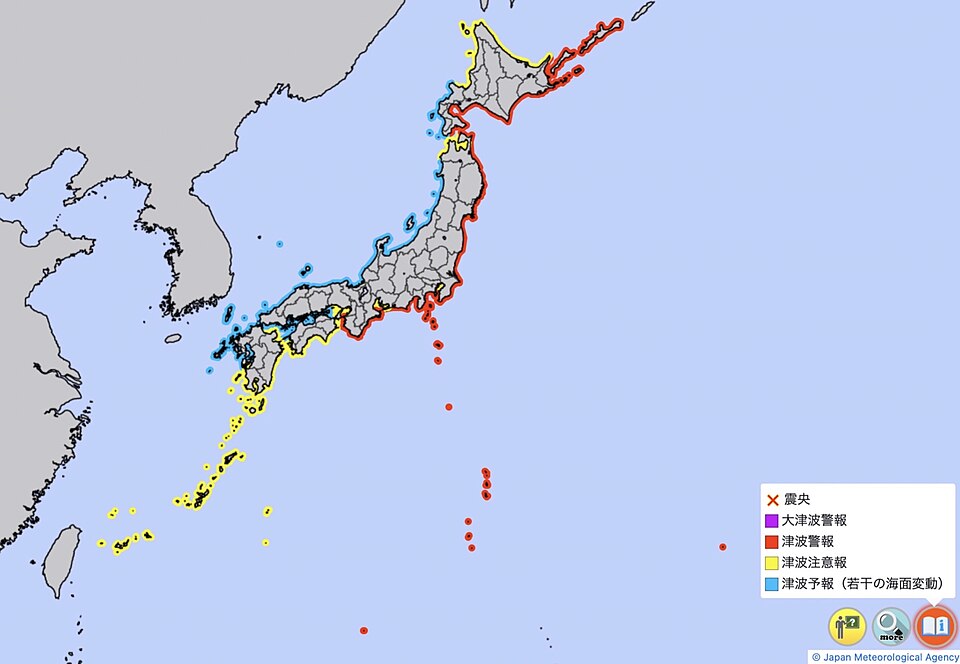8.7 Magnitude Earthquake Near Kamchatka Triggers Tsunami Alerts Across Pacific

On July 30, 2025, a powerful 8.7-magnitude earthquake struck off the coast of Russia's Kamchatka Peninsula, prompting widespread tsunami warnings across the Pacific, including regions in Japan, Hawaii, and even parts of Ecuador. The quake, which occurred at 8:25 AM local time (7:25 AM Singapore time), was located approximately 250 kilometers from Hokkaido, Japan's northernmost major island. Initial tsunami waves of around 30 centimeters were reported reaching the eastern coast of Hokkaido, with the Japan Meteorological Agency (JMA) forecasting potential subsequent waves of up to 3 meters along Japan's northern and eastern shores (Japan Meteorological Agency, July 30, 2025).
The JMA's predictions were dire, urging coastal residents not to enter the sea until the warning was lifted, due to the risk of repeated tsunami strikes. Evacuation orders were issued for various areas, including for workers at the Fukushima nuclear plant, which reported no abnormalities despite the earthquake (Tokyo Electric Power Company, July 30, 2025). According to Shinichi Sakai, a seismologist from the University of Tokyo, the shallow epicenter of the earthquake played a significant role in the resultant tsunami risk (Sakai, interview with NHK, July 30, 2025).
In the Kamchatka region, tsunami waves were reported to reach heights of up to 4 meters, leading to evacuations and damage to buildings. Kamchatka Governor Vladimir Solodov described the earthquake as the most severe in decades, stating that a kindergarten was among the structures damaged (TASS, July 30, 2025). The Russian Emergencies Ministry confirmed that the tsunami had flooded the port town of Severo-Kurilsk, affecting around 2,000 residents who were subsequently evacuated (Russian Emergencies Ministry, July 30, 2025).
The United States Tsunami Warning System also issued alerts for hazardous tsunami waves expected along parts of Hawaii's coast, with the Honolulu Department of Emergency Management recommending evacuations for vulnerable coastal areas (US Tsunami Warning Center, July 30, 2025). Tsunami alerts were issued along the U.S. West Coast, from Alaska down through California, with the Pacific Tsunami Warning Center highlighting the potential for waves exceeding 3 meters in height (Pacific Tsunami Warning Center, July 30, 2025).
In the immediate aftermath, at least six aftershocks were recorded, including one measuring 6.9 on the Richter scale, raising concerns about ongoing seismic activity in the area (Kamchatka Branch of the Geophysical Service of the Russian Academy of Sciences, July 30, 2025). The Philippines' seismology agency issued its own advisories, warning coastal populations to stay away from beaches, although predicted wave heights were expected to be less than 1 meter (Philippine Institute of Volcanology and Seismology, July 30, 2025).
As the situation develops, experts and authorities continue to monitor seismic activity in the Pacific region, with historical precedents underscoring the potential for significant aftershocks and further tsunami events. The 1952 Kamchatka earthquake, which registered a magnitude of 9.0, similarly resulted in widespread tsunami impacts across the Pacific, reinforcing the need for preparedness in this seismically active region (US Geological Survey, 1952).
In conclusion, the July 30 earthquake serves as a stark reminder of the Pacific Rim's seismic volatility. As communities brace for the implications of this event, the focus remains on ensuring safety and preparedness for future geological occurrences.
Advertisement
Tags
Advertisement





